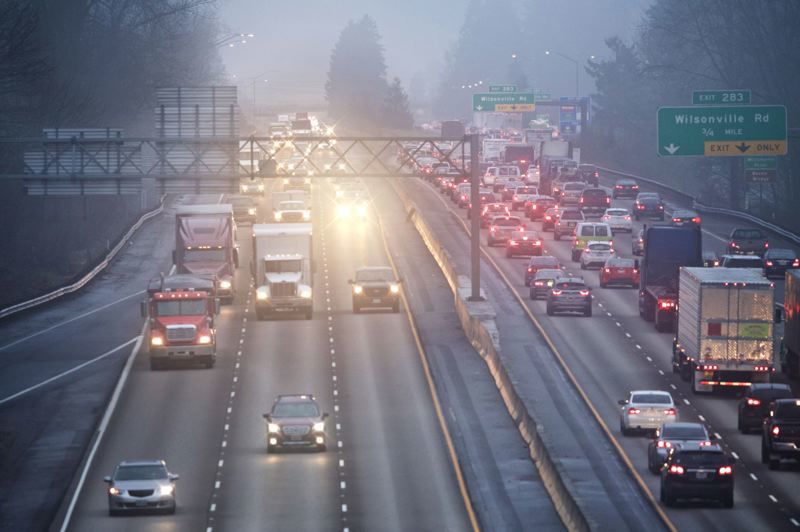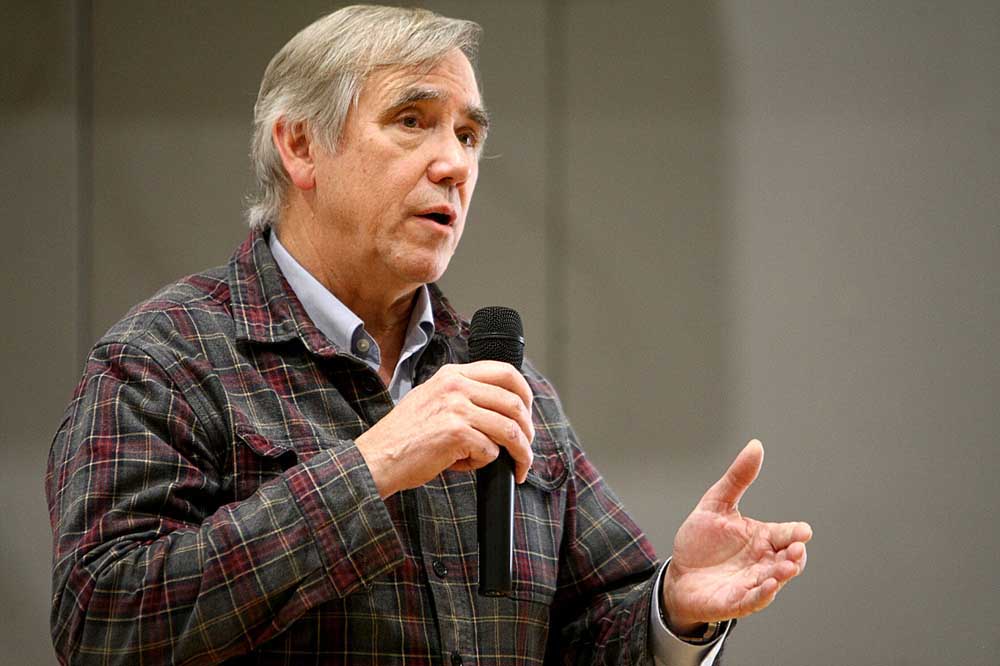Oregon ponders how to spend feds’ $1.2B on transportation
Published 9:20 am Friday, November 19, 2021

- JAIME VALDEZ/PAMPLIN FILE PHOTO - Traffic on Interstate 5 over the Boone Bridge
Oregon Transportation Commission members face more questions than answers as they ponder how to spend most of the $1.2 billion Oregon will get in new federal money in the next five years from the infrastructure legislation that President Joe Biden signed Monday.
They will have to work relatively fast to decide the first installment, which must be committed by Sept. 30, 2022. In reality, that means the commission must approve money by spring for projects that the Oregon Department of Transportation seeks to break ground on next summer.
Trending
“Under this, the time you have to get projects out the door is more like four months,” instead of the four years for projects in the state transportation improvement program, ODOT assistant director Travis Brouwer said. “That is a very compressed timeline.”
Chairman Bob Van Brocklin of Portland cautioned against raising expectations too high.
“They will provide much needed funding,” he said Thursday during a briefing. “But we will still be challenged, because the needs are far outstripping the funding.”
Julie Brown, a commission member and general manager of the Rogue Valley Transportation District, added: “What people do not understand is that much of this money is already obligated.”
The commission can divide the largest single pot of $400 million, known as “flexible funding,” among qualifying projects in the state transportation improvement program — a four-year list — and its strategic plan for the Oregon Department of Transportation.
“This is the money that the commission can dedicate to any of the categories” under the state transportation improvement program, Brouwer said.
Trending
But almost all the rest of the new money goes into programs specified by Congress, as follows (all figures are five-year totals):
• Bridge repairs, $250 million. ODOT began a more extensive bridge repair program in 2003, after cracks on some Interstate 5 bridges prompted the agency to post load limits. The Legislature responded with a $2.5 billion plan, two-thirds of which went to fix state and local bridges on key freight routes. But most of the 2,800 bridges in the state highway system, built largely during the interstate highway era of the 1960s, are past the 50-year mark.
Brouwer said the new money would enable ODOT to increase its funding for bridge repairs by about a third — but it’s still less than what is needed annually.
• Charging stations for electric vehicles, $52 million. Oregon has corridors already designated on Interstate 5, Interstate 84, U.S. 101 and selected routes to the Oregon coast and Central Oregon.
• Resilience, such as making bridges resistant to earthquakes, protecting highways from flooding and other measures prompted by climate change, $94 million.
• Reduction of greenhouse-gas emissions, $82 million. The Environmental Quality Commission is writing a final plan to comply with a 2020 executive order by Gov. Kate Brown to reduce such emissions by 80% by 2050; transportation accounts for about 40% of total current emissions.
• Safety measures, $45 million.
• Bicycle and pedestrian paths, $30 million.
In addition, $200 million goes for public transportation over five years, but the lion’s share will go to Oregon’s transit districts, including TriMet for the Portland metro area. Cities, counties and Oregon’s eight metropolitan planning organizations will split $200 million; this total is excluded from the $1.2 billion total.
Oregon will have more time, about three years, to decide spending for bridge repairs and electric-vehicle charging stations.
Some of the money under the federal infrastructure legislation is for broadband expansion and water systems, and does not go through the Oregon Transportation Commission.
About $100 billion of the $1 trillion in the legislation is for competitive grants that will be approved by the U.S. Department of Transportation. Brouwer said in a briefing Nov. 12 that Oregon is likely to seek grants for its largest projects — such as the widening and partial capping of I-5 at the Rose Quarter, and a new bridge across the Columbia River linking Portland with Vancouver, Washington — although the commission could choose to use its flexible funds and state funds to provide matching money.





